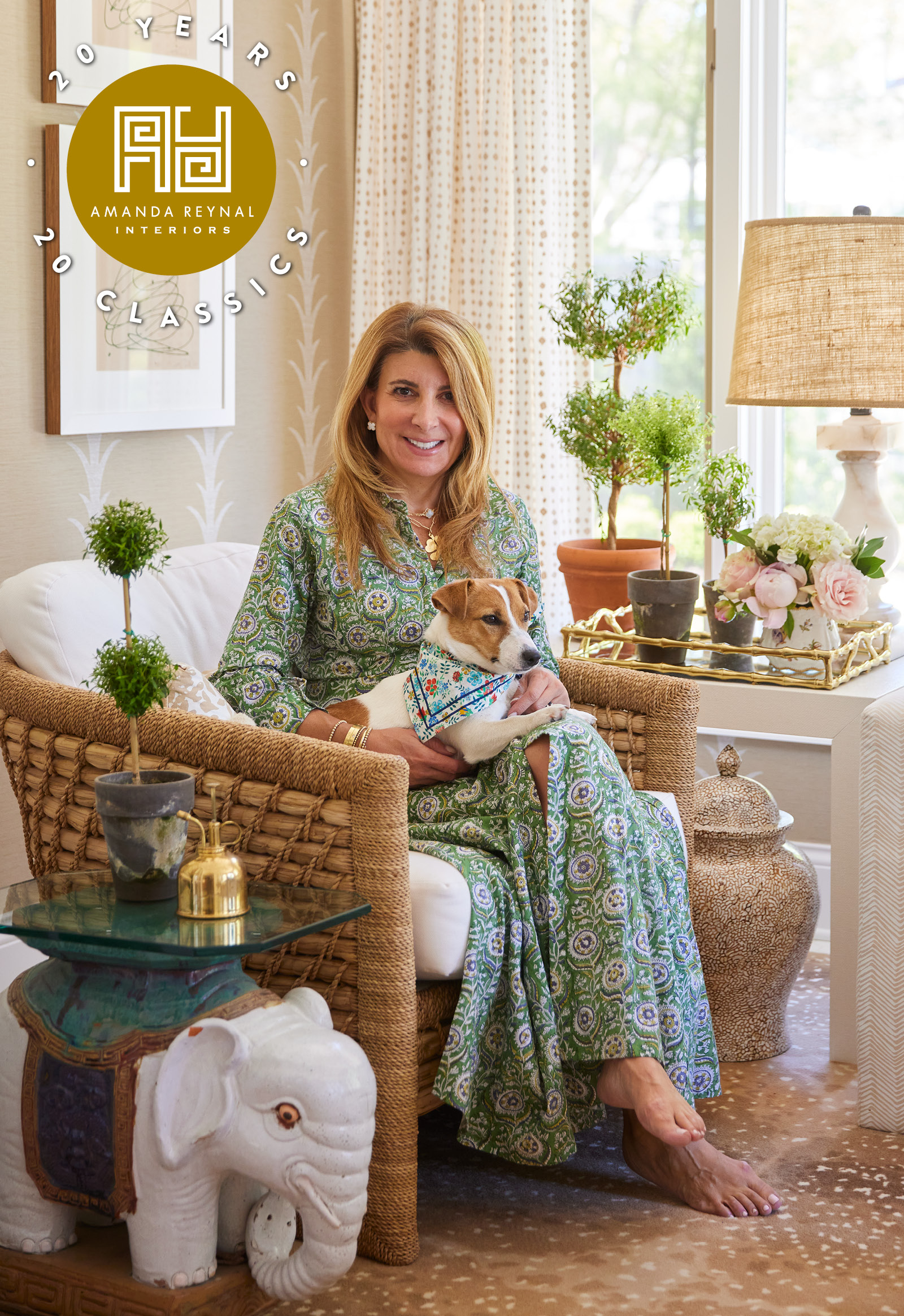
One of the best parts of spring is watching our outdoors transform daily into a new spectacle of growth. Trees go from bare to buds to leaf-filled. Flower stems pop bright colors onto the landscape and my planters and pots make our patio full of joyful vibrancy.
It’s during this time that I get inspired to bring the outdoors inside. I want the interiors in my home to sing a similar tune of freshness with flowers and plants. Bring in the topiaries, a form that’s traditional and modern all at once.

Topiaries have been my favorite for years. There’s something about manipulating nature to manicured glory that excites me. Plus, not only do topiaries and plants of all kinds benefit wellness with their air-cleaning benefits, they help support some of the design principles that I execute throughout my projects. Here are three examples:
Pattern and Texture
I mix patterns all day long. In fact, it’s probably my favorite part of the design process. Well just like fabrics, not all topiaries are the same. As you are visiting your garden centers, vary the different species. The different leaves and sprigs organically add texture. Rosemary topiaries, for instance, are ideal for a kitchen, where you want an aromatic herbal waft throughout the air. Choose lavender of course, if you are bringing topiaries into your bedroom. Lavender’s calming qualities will not only aid sleep-time but will give you something pretty to see when you wake up. Myrtle is a natural go-to, not only during the holiday season but really all year-’round.
Height, Scale, and Symmetry
When styling rooms and vignettes with accessories, it’s important to vary height so the eye isn’t fighting on a place to focus. In the case of topiaries, I like the differentiation of heights that they offer. I’ll place two, one taller than the other, no differently than I would with a frame, a box, and a pair of candlesticks. Nothing should compete and everything should shine on its own. Of course, symmetry is always aesthetically pleasing as well. A pair of topiaries in matching heights are perfect on either side of a mantel.
Geometry
I use geometric patterns often throughout my interior projects on fabrics and wallpapers. Topiary plants visually introduce shape, but with their individual branches, in a way that is softer than the sometimes hard lines that show on textile and wallcovering motifs.
I like to have something living in every main room in the house, whether it’s a tree, orchid, fern, or topiary. I encourage you to think about the shapely topiary for your own home. Its manicured silhouette will add polish and freshness that will turn your space into one natural beauty.


